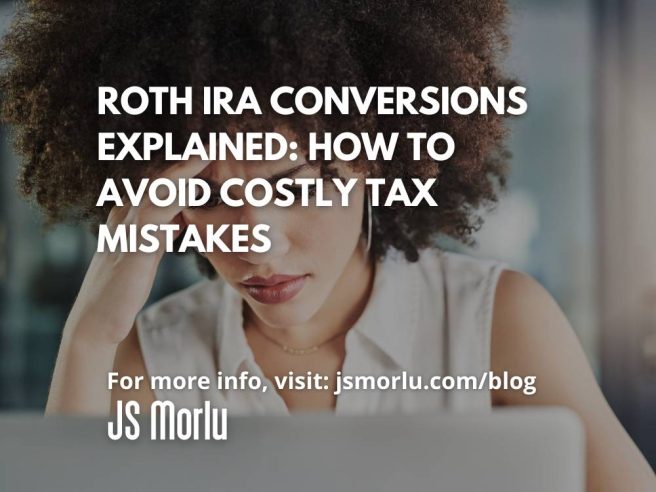Roth IRAs offer significant benefits, including tax-free growth and withdrawals in retirement. However, contributions to Roth IRAs are subject to income limitations. For 2024, the maximum annual contribution is $7,000 ($8,000 if you are age 50 or older). However, this amount phases out for joint filers with an adjusted gross income (AGI) between $230,000 and $240,000. For unmarried taxpayers, the phase-out occurs between $146,000 and $161,000. These limits are adjusted annually for inflation.
Higher-income taxpayers can bypass these restrictions using a strategy known as a “back-door Roth IRA.” This involves contributing to a traditional IRA first and then converting it to a Roth IRA. While this strategy can be advantageous, it comes with potential pitfalls that could lead to unexpected tax liabilities.
Traditional IRA vs. Roth IRA: Key Differences
Before diving into conversions, it’s important to understand the fundamental differences between traditional and Roth IRAs:
- Traditional IRA: Contributions are made with pre-tax dollars, reducing taxable income for the year. Earnings grow tax-deferred, but withdrawals are taxed as ordinary income.
- Roth IRA: Contributions are made with after-tax dollars, meaning no immediate tax deduction. The key benefit is that earnings grow tax-free, and qualified withdrawals are also tax-free. This can be highly beneficial if you expect to be in a higher tax bracket during retirement.
The Roth IRA Conversion Process
Converting a traditional IRA to a Roth IRA involves moving funds from the traditional account into a Roth IRA. During the conversion, the transferred amount is treated as taxable income for the year, potentially leading to a significant tax bill depending on your tax bracket.
Benefits of Converting to a Roth IRA
- Tax-Free Withdrawals: The primary advantage of a Roth IRA is tax-free withdrawals in retirement, providing a hedge against future tax rate increases.
- No Required Minimum Distributions (RMDs): Unlike traditional IRAs, Roth IRAs do not mandate withdrawals starting at age 73, offering more control over retirement funds.
- Estate Planning Advantages: Roth IRAs can be passed on to heirs, who can also benefit from tax-free withdrawals, making them a valuable estate planning tool.
Pros and Cons of a Roth IRA Conversion
Pros:
- Potential for tax-free growth and withdrawals.
- No RMDs during the owner’s lifetime.
- Provides tax diversification in retirement planning.
Cons:
- Upfront taxes on the converted amount.
- Potentially pushes you into a higher tax bracket.
- Could increase Medicare premiums two years later due to higher AGI.
- Increased AGI can reduce eligibility for other tax benefits.
- Conversions cannot be undone once completed.
Age Considerations in Conversions
Age plays a critical role in the decision to convert. Younger individuals may benefit more, especially if they anticipate being in a higher tax bracket later. Older individuals, especially those close to retirement, need to carefully weigh the upfront tax cost against the potential benefits of tax-free growth.
Tax Implications and Strategy
Non-Deductible Contributions: Converting involves recognizing the pro-rata rule, where converted amounts are considered a mix of deductible (taxable) and non-deductible (non-taxable) contributions. This means you cannot select only non-deductible contributions for conversion, necessitating careful analysis to determine the taxable amount.
Conversion Income: The amount converted adds to your taxable income for the year, impacting eligibility for other tax benefits such as the American Opportunity Tax Credit, Earned Income Tax Credit, and various deductions. A higher AGI due to conversion can also trigger the 3.8% net investment income surtax for higher-income taxpayers.
Medicare Premiums and Other Impacts: An increase in AGI could lead to higher Medicare Part B and D premiums two years later, as premiums are calculated based on income from two years prior. Additionally, a higher AGI could affect eligibility for credits on health care premiums under the Affordable Care Act.
Paying the Conversion Tax
When converting, taxpayers can pay the associated taxes from outside funds or from the IRA itself. Using IRA funds for tax payment reduces the amount that gets converted and may trigger a 10% early withdrawal penalty if under age 59½.
Strategic Tax Planning
To minimize the tax burden, consider spreading the conversion over several years or timing it during years of lower income. This strategy helps avoid large spikes in taxable income and the associated tax impact.
Conclusion: Consult a Professional
Converting a traditional IRA to a Roth IRA can be a strategic move for taxpayers expecting higher tax rates in retirement or those looking to optimize their estate planning. However, the decision involves complex tax considerations and should not be taken lightly. It is essential to analyze your financial situation, tax implications, and long-term retirement goals. Consulting with a tax professional can help tailor a strategy that aligns with your individual needs, ensuring that the benefits of a Roth conversion outweigh the potential costs.
JS Morlu LLC is a top-tier accounting firm based in Woodbridge, Virginia, with a team of highly experienced and qualified CPAs and business advisors. We are dedicated to providing comprehensive accounting, tax, and business advisory services to clients throughout the Washington, D.C. Metro Area and the surrounding regions. With over a decade of experience, we have cultivated a deep understanding of our clients’ needs and aspirations. We recognize that our clients seek more than just value-added accounting services; they seek a trusted partner who can guide them towards achieving their business goals and personal financial well-being.
Talk to us || What our clients says about us


